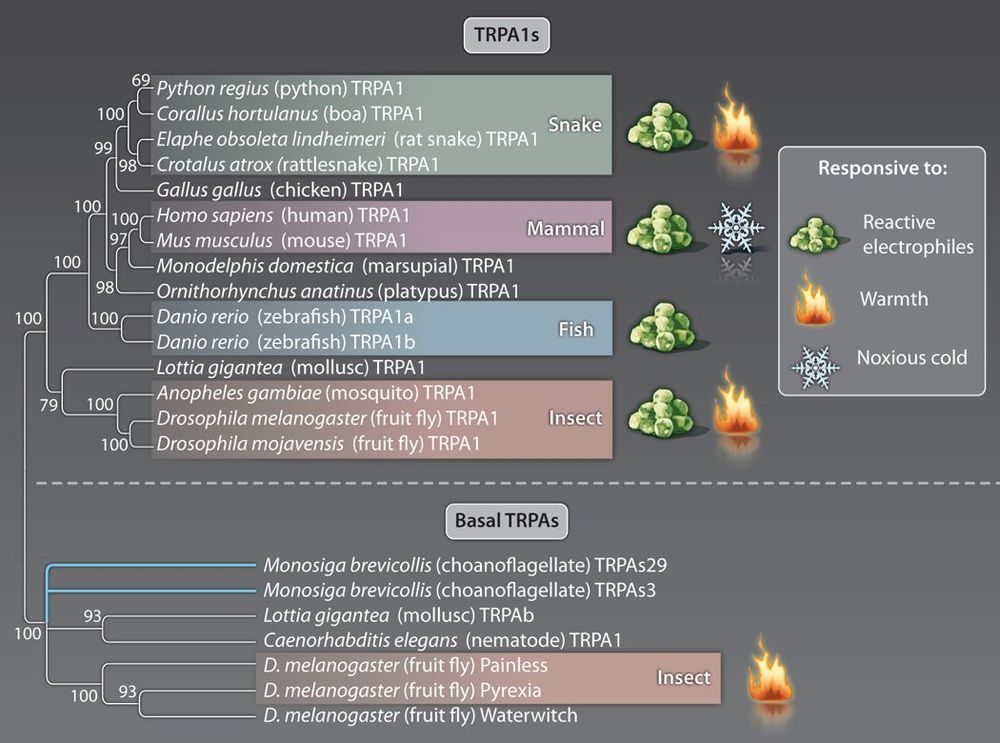Circa 2010
The pit organs of pit vipers, pythons, and boas are remarkable sensory devices that allow these snakes to detect infrared radiation emitted by warm-blooded prey. It has been theorized that this capacity reflects the pit organ’s exceptional sensitivity to subtle fluctuations in temperature, but the molecules responsible for this extreme thermal resolution have been unknown. New evidence shows that pit organs respond to temperature using the warmth-activated cation channel TRPA1 (transient receptor potential ankyrin 1), a finding that provides a first glimpse of the underlying molecular hardware. The properties of these snake TRPA1s raise intriguing questions about the mechanisms responsible for the exceptional sensitivity of many biological thermoreceptors and about the evolutionary origins of these warmth-activated TRP channels.









Comments are closed.